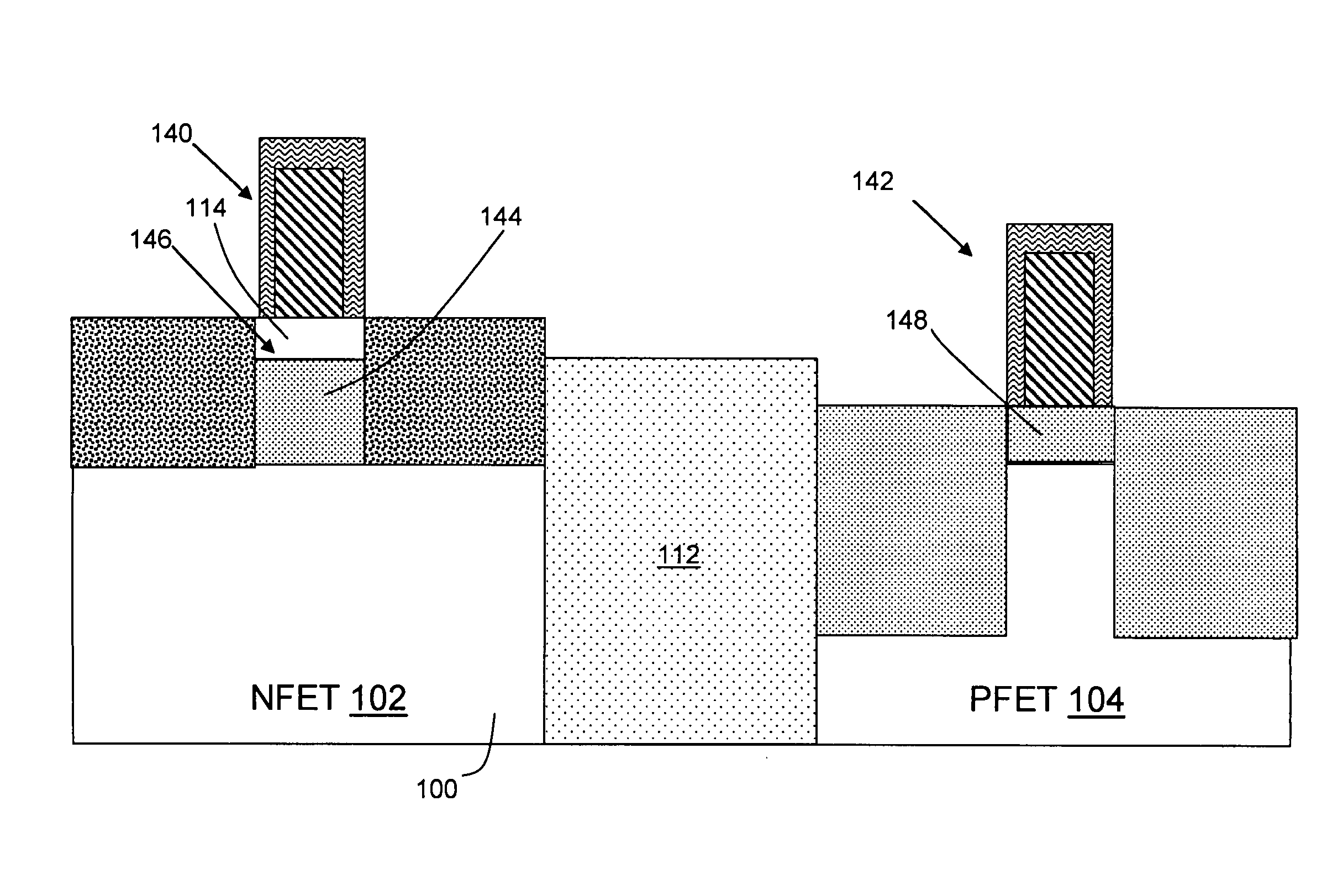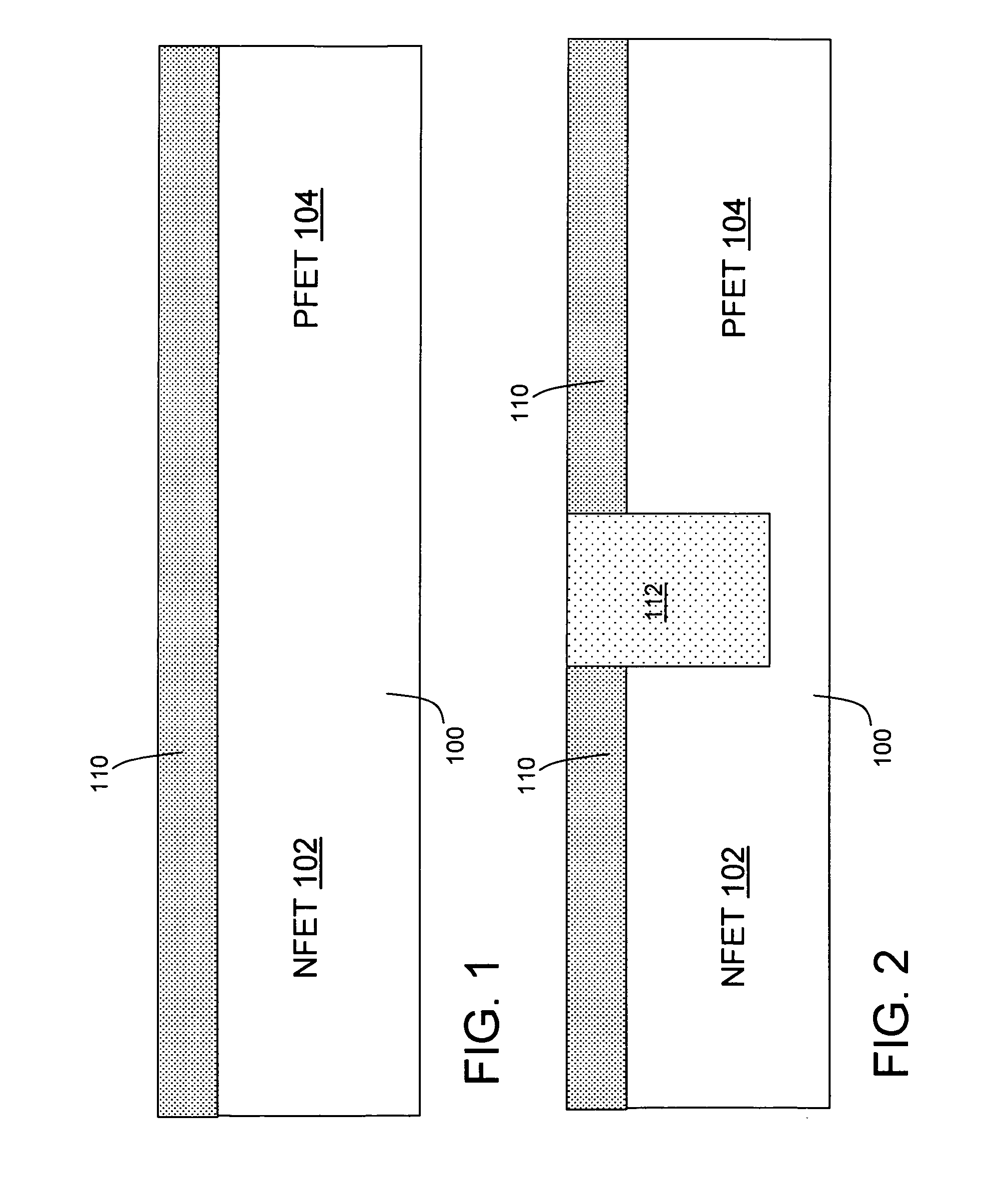METHODS OF INTEGRATING REVERSE eSiGe ON NFET AND SiGe CHANNEL ON PFET, AND RELATED STRUCTURE
a reverse esige and pfet technology, applied in the field of integrated circuit (ic) chip fabrication, can solve the problems of poor throughput, defects if not adequately removed, and added expens
- Summary
- Abstract
- Description
- Claims
- Application Information
AI Technical Summary
Benefits of technology
Problems solved by technology
Method used
Image
Examples
Embodiment Construction
[0018]The disclosure relates to methods of forming, and related structure, a single epitaxial growth of a silicon germanium (SiGe) layer on both an n-type field effect transistor (NFET) area and p-type FET (PFET) area, which allows for process simplification. The thickness and composition of the SiGe layer in the PFET area can be separately controlled in an optional thinning process.
[0019]Referring to the drawings, FIG. 1 shows a first process including providing a substrate 100 including an NFET area 102 and a PFET area 102. NFET area 102 and PFET area 104 indicate regions of substrate 100 that will eventually have NFETs and PFETs formed thereon. As understood, the position of areas 102, 104 may be switched. Substrate 100 may include but is not limited to silicon, germanium, silicon germanium, silicon carbide, and those consisting essentially of one or more III-V compound semiconductors having a composition defined by the formula AlX1GaX2InX3AsY1PY2NY3SbY4, where X1, X2, X3, Y1, Y2...
PUM
 Login to View More
Login to View More Abstract
Description
Claims
Application Information
 Login to View More
Login to View More - R&D
- Intellectual Property
- Life Sciences
- Materials
- Tech Scout
- Unparalleled Data Quality
- Higher Quality Content
- 60% Fewer Hallucinations
Browse by: Latest US Patents, China's latest patents, Technical Efficacy Thesaurus, Application Domain, Technology Topic, Popular Technical Reports.
© 2025 PatSnap. All rights reserved.Legal|Privacy policy|Modern Slavery Act Transparency Statement|Sitemap|About US| Contact US: help@patsnap.com



